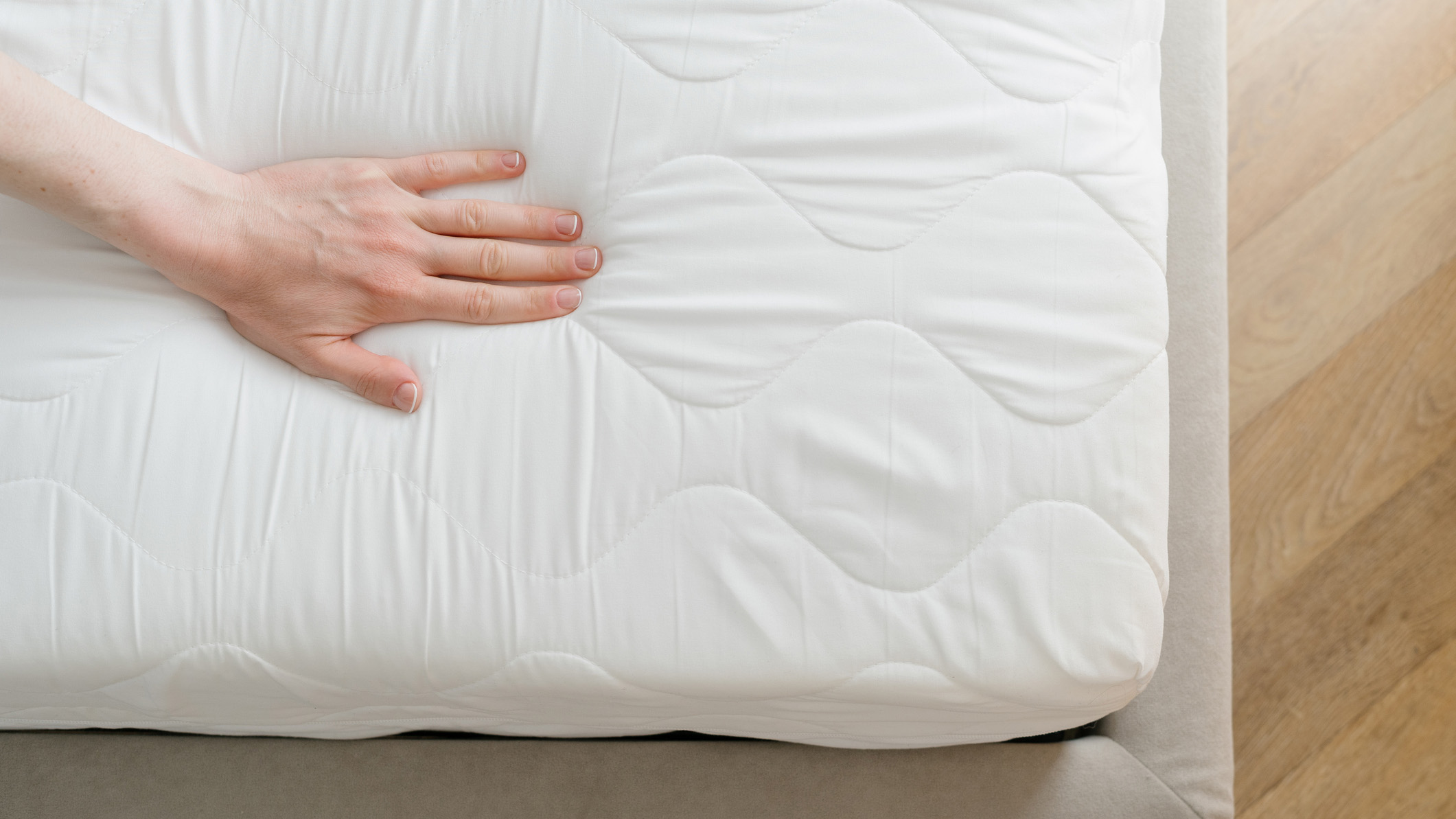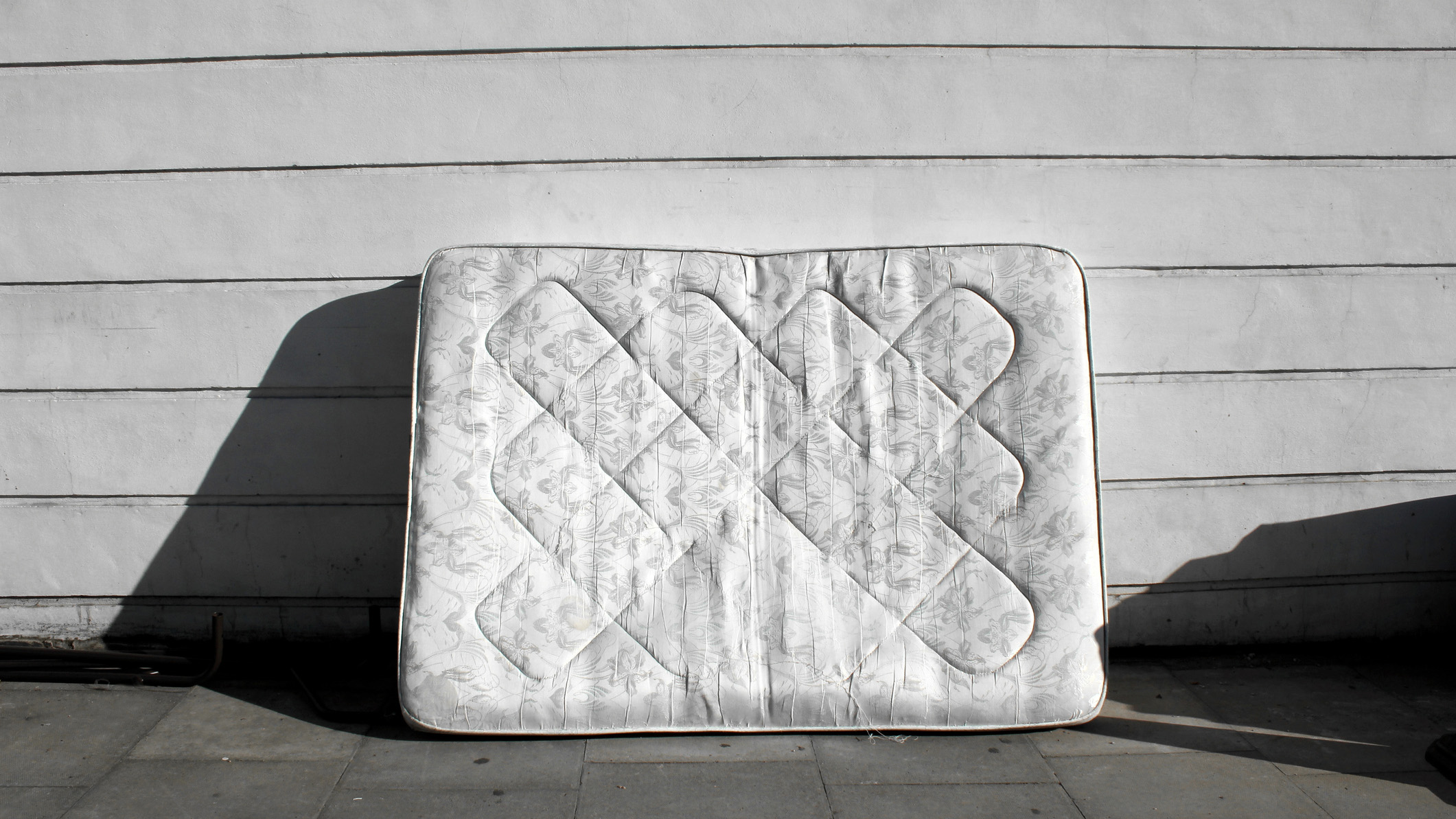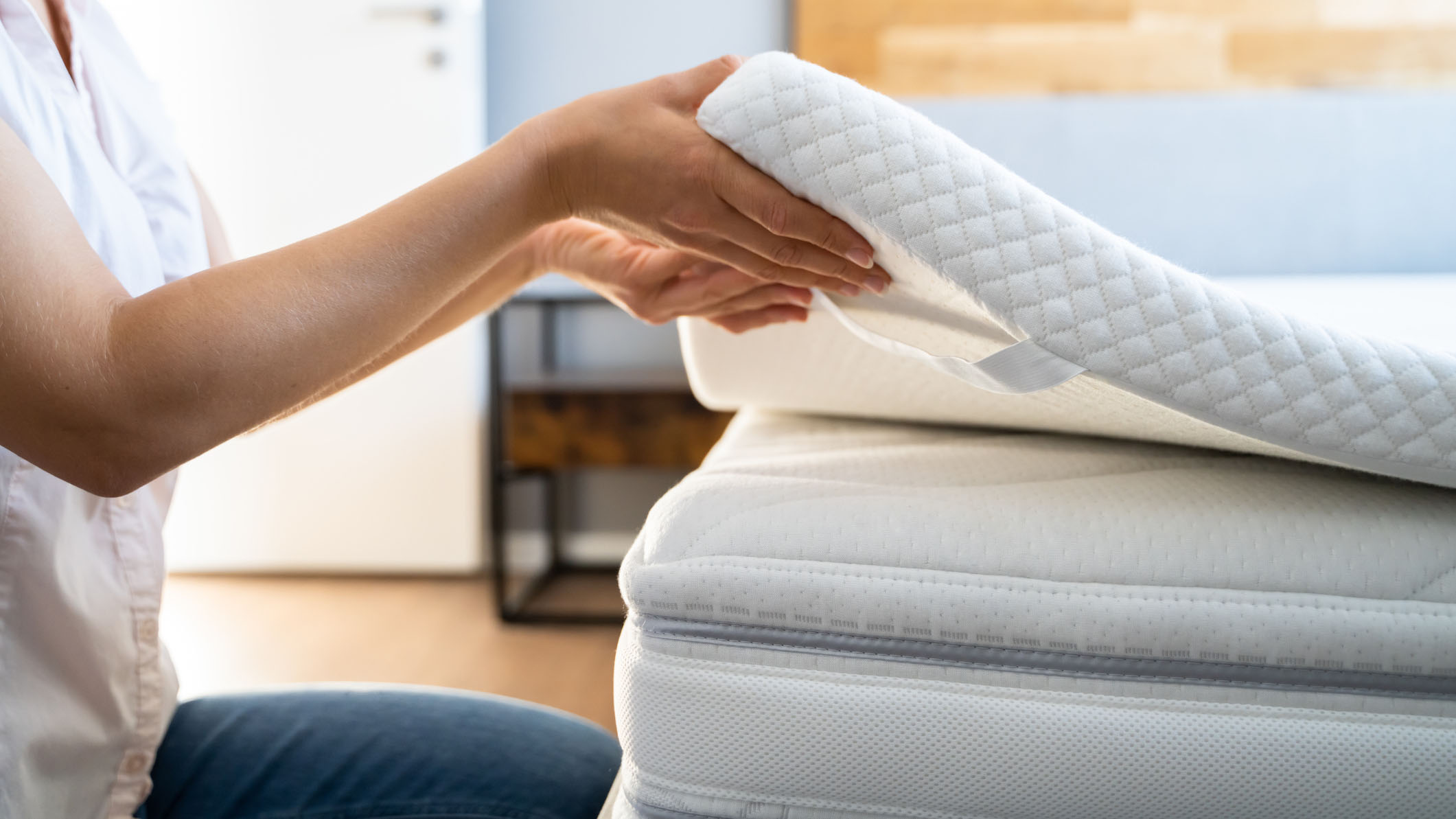This is why your mattress dips in the middle — and how to tell if it's safe to sleep on
How to tell the difference between major mattress sagging and normal wear and tear

If you're sleeping in the same bed every night, it's normal to notice that your mattress has started to dip in the middle. However, sometimes this issue can worsen over time and affect the quality of your sleep.
Even the very best mattresses with robust support layers aren't immune to sagging over time, but how can you spot the difference between standard wear and tear and major, unfixable sagging? Here we'll explain what can cause your mattress to dip in the middle and how sleeping on a sagging mattress affects your sleep quality and back health.
Plus, we'll explain how you can fix a sagging mattress – and when to throw in the towel and replace it. If after reading this you decide that it's time to upgrade, there are plenty of mattress sales around right now to help save you money.
Why your mattress is dipping in the middle
If your mattress dips in the middle, this is known as mattress sagging and is usually a common symptoms of everyday wear and tear (there are exceptions, which we'll cover below). The main cause of mattress sagging is extended usage — remember, you're sleeping on that mattress for roughly eight hours every night — and you'll usually see that the mattress dips in areas of high usage such as the centre.
Exposure to heat and liquids can also cause a mattress to sag. If you live in a warm climate, or your bedroom is continuously exposed to hot direct sunlight or regular liquid spills, this can speed up the sagging process.

That said, mattress sagging is part of the natural ageing process and you should only start to notice dips after you've slept on the mattress for a good few years. If you've had your mattress for less than six months and you've already noticed some sagging (especially if the dip measure more than 2" deep) then this is likely a manufacturing defect. If you're still within warranty (most mattress warranties last 10 years from purchase), contact the manufacturer ASAP for a replacement bed.
Is a sagging mattress safe to sleep on?
Mattress sagging is considered minor if it isn't over 2" deep. However, if the dip is deeper than 2", sleeping on the mattress can cause issues. The firmer the mattress, the more support it gives to healthy spinal alignment, which is particularly important for back, stomach and heavyweight sleepers.
Get instant access to breaking news, the hottest reviews, great deals and helpful tips.
If you sleep on your back or stomach, or weigh over 230lbs, then you'll need extra support in the hip region. If a mattress sags, this can cause your hips to sink into the mattress surface. When your hips dip, your spine becomes misaligned which leads to lower back pain.
How to fix a mattress that dips in the middle
If the dip in the mattress is over 2" long, but you can't afford to buy a new mattress at present, there are a few temporary solutions you can try. One of the best, cost-effective way to fix a sagging mattress is to invest in one of the best mattress toppers. Bed toppers can be used to make a mattress either softer or firmer, while some toppers come with multiple firmness options. Choose a topper that suits your needs and adds firmness and extra support.
If you sleep alone, you could try sleeping on a different side of the bed every night to stop one side from being overused. Rotating your mattress regularly can also help to spread out the wear and tear, but this method may be ineffective if the sagging is in the dead centre of the mattress.

Pillows are another stopgap when trying to stop the effects of sagging in a certain area, such as the dead centre, which can't be prevented or avoided by switching bed sides or rotating your mattress. Simply take one of the best pillows for dense support, and place it in the area affected by sagging.
Some people use pieces of MDF or other wood between their bedframe and the mattress, but we don’t generally recommend this as it can become a breeding ground for bacteria, mold, mildew and dust mites.
When to buy a new mattress
If the sagging is significant and can’t be temporarily tempered with a topper or even temporarily fixed with pillows, check to see if it’s still covered by warranty or within the sleep trial period, then ask for an exchange. If it isn’t covered, you’ll need to replace it to prevent any damage to your back and sleep posture.
When choosing a new mattress, invest in a durable mattress that offers sturdy support layers and excellent edge support, so you don't feel like you're sinking or dipping when you sit on the edge of the bed. The best organic mattresses tend to take a longer time to sag, as they're often made from durable latex. Latex mattresses can last up to 20 years (in contrast, memory foam, hybrid, and innerspring beds last around 8-10 years on average), but the downside is that they are very expensive.
However, there are a number of brands that offer extra-long sleep trials and warranties. Some brands offer lifetime warranties, free returns and exchanges, and one-year sleep trials, including DreamCloud and Nectar.

Frances Daniels is a PPA-accredited journalist and Sleep Staff Writer at Tom's Guide with an MA in Magazine Journalism from Cardiff University. Her role includes covering mattress and sleep news and writing sleep product reviews and buyer's guides, including our Best Hybrid Mattress 2025 guide. She is interested in the relationship between sleep and health, interviewing an array of experts to create in-depth articles about topics such as nutrition, sleep disorders, sleep hygiene, and mattress care. She is also our specialist on mattress toppers — producing bed topper reviews and taking care of our Best Mattress Toppers 2025 guide — and leads content relating to fiberglass-free beds for a non-toxic sleep. Outside of Tom's Guide, she has written for Ideal Home and Marie Claire.
